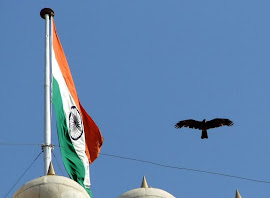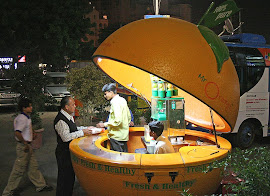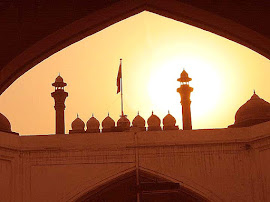India's moon shot
 There could’ve been no better Diwali gift for Indians. At Rs 400 crore a pop, it is probably the costliest rocket ever sent up to celebrate the coming of the festival. Even the intermittent rain couldn’t dampen the launch preparations. Precisely on schedule at 6.22 am on October 22, the Polar Satellite Launch Vehicle, PSLV-C 11, carrying India’s most prestigious space payload to date, Chandrayaan-1, lifted off with a burst of orange fumes from the launchpad in Sriharikota in Andhra Pradesh.
There could’ve been no better Diwali gift for Indians. At Rs 400 crore a pop, it is probably the costliest rocket ever sent up to celebrate the coming of the festival. Even the intermittent rain couldn’t dampen the launch preparations. Precisely on schedule at 6.22 am on October 22, the Polar Satellite Launch Vehicle, PSLV-C 11, carrying India’s most prestigious space payload to date, Chandrayaan-1, lifted off with a burst of orange fumes from the launchpad in Sriharikota in Andhra Pradesh.
The launcher blazed across the firmament like a comet and was soon enveloped by the cloudy skies briefly reappearing before being swallowed up again. Seconds later, the sonic boom caused in its wake shook the buildings in the space port. No rock music band can ever hope to match the bass roar of its rockets as it powered the vehicle into orbit. The space launch was probably the best sound and light show, albeit the briefest. Inside the Master Control Centre, Indian Space Research Organisation (ISRO) scientists sat tensely watching the giant screens and computer consoles flashing information of the vehicle’s performance. With Doordarshan telecasting the lift-off live, the country too had tuned into this prestigious launch. After all, ISRO was embarking on a mission that no Indian had ever done before—a journey to the moon 4,00,000 km away, almost 34 times the distance from Delhi to New York. Eighteen agonising minutes later, the launcher injected Chandrayaan-1 into an elliptical orbit of 36,000 km around the earth at its apogee (farthest point from the earth) and 250 km at its perigee (closest point).Bristling with scientific instruments put together by seven nations including India, Chandrayaan-1 was finally on its lonely way. Despite travelling at 30 times the speed of sound because of its elliptical orbit, it would still take 22 days before it could have a rendezvous with the moon and break free from the earth’s gravity. Soon after the successful lift-off, ISRO Chairman G. Madhavan Nair told India Today: “It’s a giant leap for India and ISRO. If the launch was complex, the days ahead would prove most challenging for us.” (see interview)
That’s because ISRO is entering unchartered seas. For the first time it will operate out of earth’s gravitational field. Now they would have to take care of perturbations coming from planetary movements, solar flares and the gravity flux caused by a constantly rotating moon. Commanded through signals from the largest space antenna ever built by ISRO in Byalalu near Bangalore, Chandrayaan would begin a complex set of manouevres that would gradually increase its orbit in the days ahead. In a series of five controlled firings of its on-board engine spread over a week, it would raise its apogee to 3,80,000 km bringing it 500 km from the moon. Then it would retrofire its rockets to lower its altitude and be captured by moon’s gravity before obtaining a stable circular orbit of 100 km around the moon. Nair warns that if the angle of descent deviates by a fraction or the velocity is incorrect, it would send Chandrayaan crashing into the moon or into deep space from where it can’t be recovered. When the US sent orbiters to the moon in the ’60s, the first six launches failed.
The Soviets who sent 29 missions from 1959 to 1976 before stopping altogether reported nine failures. If all goes well, November 15 is the scheduled date when Chandrayaan would reach its final orbital path of 100 km above the moon. It would then orbit the moon every two hours. Among Chandrayaan’s first tasks would be to eject a 35-kg impactor with Indian tricolours painted on it and then send it hurtling towards the moon. The impactor would crash the lunar surface at high speed, sending out a plume of dust and leaving behind the remains of the first Indian presence on an alien surface. It was former President Dr A.P.J. Abdul Kalam who advised the team to have an impact probe to mark India’s presence on the moon. As he told Nair, “If you are going to go that far, why not at least have an impactor.”
.jpg)








.jpg)

0 comments:
Post a Comment